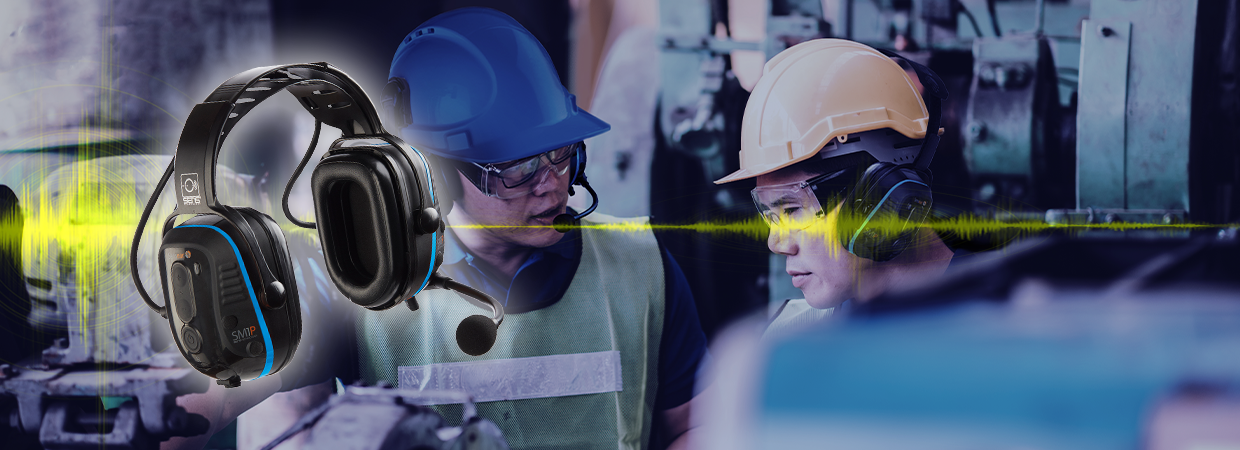- Home
- Blog
- Noise-Induced Hearing Loss
- An Overview of Noise-Induced Hearing Loss

An Overview of Noise-Induced Hearing Loss
Every day, we hear sounds around us at work, at home, or in the car. Most of the time, these noises are harmless to our ears. However, sometimes we experience very loud noise which, even for a brief amount of exposure, can temporarily or permanently damage our inner ears. This damage is called noise-induced hearing loss (NIHL) and typically occurs in high-noise work environments where noise exceeds 85 dB(A). Occupational noise-induced hearing loss is also commonly referred to as industrial deafness.
What are OSHA's Requirements for Hearing Protection?
According to the National Institute on Deafness and Other Communication Disorders (NIDCD), NIHL occurs from a "one-time exposure to an intense 'impulse' sound...or by continuous exposure to loud sounds over an extended period of time." As mentioned above, NIHL occurs in high-noise environments where noise exposure is at or above 85 dB(A). The louder the noise, the less time it takes for hearing loss to happen. The Occupational Safety and Health Administration (OSHA) requires companies to implement a Hearing Conservation Program if noise exposures are at or above 85 dB(A) for more than 8 hours.
According to OSHA, Hearing Conservation Programs are designed to prevent occupational hearing loss, preserve remaining hearing, and provide workers with hearing protection to safeguard themselves. These programs can include free hearing exams, hearing protection devices, safety training, and fit-testing evaluations that determine the effectiveness of hearing protection devices.
What Causes NIHL?
To understand how these loud noises damage hearing, an explanation of how the human ear works is required. Sound waves enter our outer ear and travel to our eardrums. The eardrum then vibrates and sends these vibrations to the middle ear where the sound arrives in the cochlea. The cochlea is a snail-shaped bone filled with fluid that is split into two parts. The partition that separates these two sections of the cochlea is called the basilar membrane, and it acts as a ground level for important hearing structures. These important hearing structures are little hair cells that move up and down when the cochlea's fluid starts to ripple from the incoming sound vibrations. These hair cells' tips have microscopic hair-like projections called stereocilia that will then rub against an overlying structure and bend. This bending motion causes the tips of the stereocilia to open and allow chemicals to rush into them, creating an electrical signal that travels to the brain via the auditory nerve and translates to sound that we can understand. NIHL happens when these tiny hair cells are damaged and die. Unlike most hair cells on our bodies, these do not regrow once they have been damaged.
What are the Warning Signs that a Workplace May be Too Noisy?
- Having to shout to be heard in your work environment.
- A ringing or humming in your ears when you leave the noisy area.
- A temporary hearing loss that continues outside the noisy work area.
What are the Effects of NIHL?
With prolonged exposure to loud noises above 85 dB(A), a worker’s hearing may become distorted or muffled, making participation in a conversation difficult. If prolonged beyond OSHA's recommended exposure limit, NIHL can cause permanent hearing loss or deafness.
NIHL can also cause a condition called “tinnitus," which causes a ringing in the ears of the person affected. This may be a temporary condition, occurring occasionally, or in worst cases, become a permanent condition that is constantly present.
Methods to Avoid NIHL and How Sensear Will Implement Protection
NIHL is the only 100% preventable type of hearing loss. However, once the damage has occurred, it is irreversible. Understanding noise hazards and protecting your workers in a high-noise work environment can go a long way to avoiding incidences of NIHL. The following key methods will help avoid NIHL and will provide hearing protection, implemented alongside Sensear's high-noise industrial protective headsets and earplugs.
- Identify the workplace noises that cause damage to hearing at or above 85 dB(A).
- Place a barrier between the noise source and the workers – or better yet, move the noisy equipment into a noise enclosure.
- Maintain your machinery and equipment to avoid extra noise from malfunctions.
- Move workers farther away from noisy equipment – increased distance reduce exposure to hazardous noises.
- Limit the amount of time a worker spends near noisy equipment.
- Use proper fitting personal hearing protection, such as earplugs or earmuffs. Base your decision on work conditions and worker preference. Hearing protection that is not worn or removed often offers no hearing protection at all. All Sensear devices have passed the required hearing protection industry certifications to ensure effective communication with hearing protection.
- Ensure that the hearing protection being worn limits the sound output level, to ensure workers aren’t exposed to loud sounds coming into the headset via two-way radio or a music player. Sensear's smart headsets and earplugs contain volume limiters that ensure maximum output “in the ear” of 82 dB(A) in noise up to 105 dB(A), and for the Extreme Noise headsets, up to 120 dB(A).
- Provide quiet areas where workers can get away from the hazardous noises to allow time for hearing to recover.
- Provide regular hearing checks for those workers exposed to hazardous noises.
High levels of occupational noise remain a problem in all regions of the world. It is important for businesses that utilize high-noise machinery and equipment to understand this problem and provide appropriate hearing protection for their workers. With improvements in technology such as smart communication headsets and earplugs, this is becoming less daunting a task.









